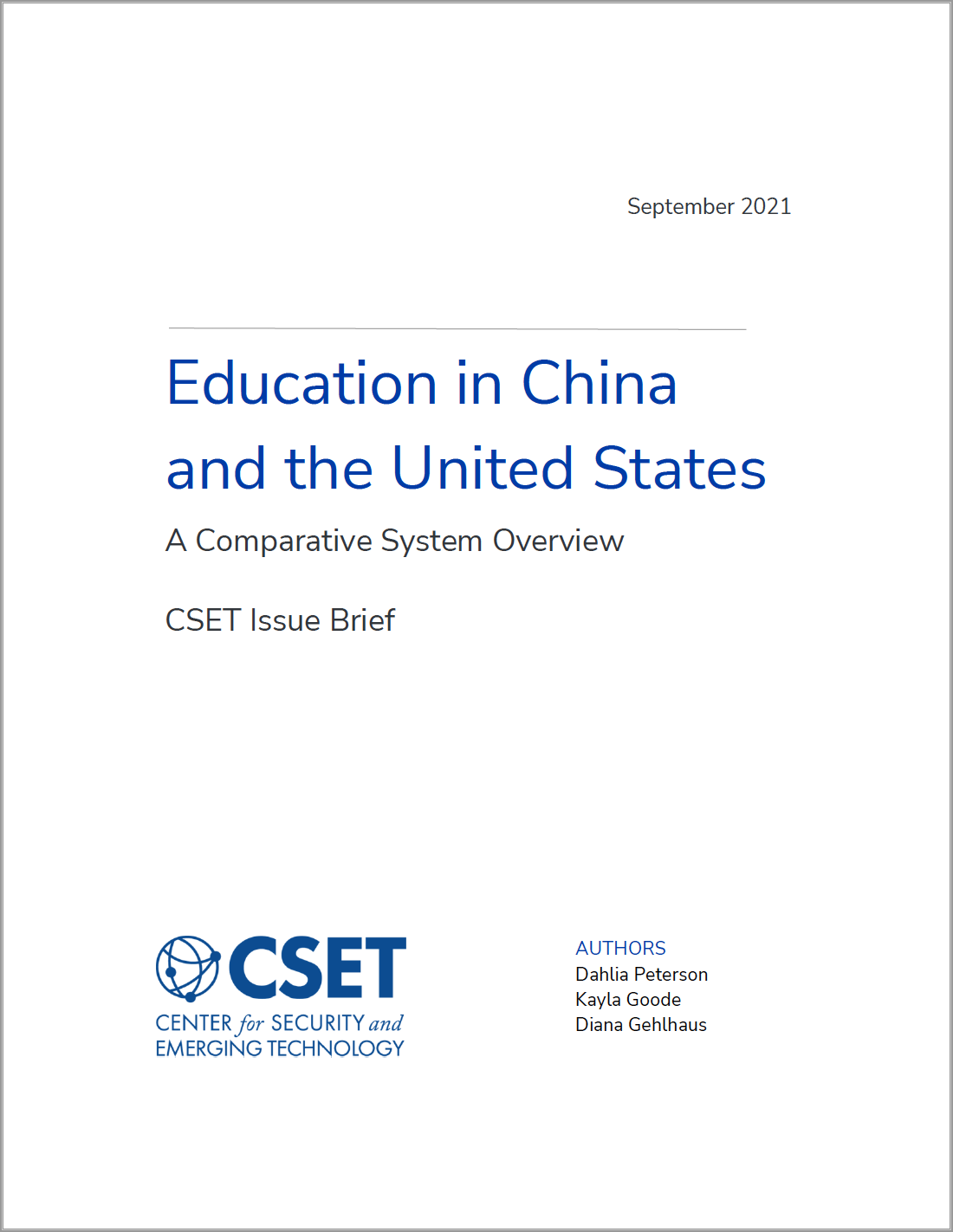Executive Summary
Many in the national security community are concerned about China’s rising dominance in artificial intelligence and AI talent. Leading in AI workforce competitiveness hinges on the education, development, and sustainment of the best and brightest AI talent. This includes top-tier computer scientists, software engineers, database architects, and other technical workers that can effectively create, modify, and operate AI-enabled machines and other products.
This issue brief provides an overview of the education systems in China and the United States. We provide this context for better understanding the accompanying main report, “AI Education in China and the United States: A Comparative Assessment.”
The Chinese education system is mainly characterized by its Ministry of Education setting centralized goals in five- to 15-year education strategies. The MOE also certifies teachers and approves curricula and teaching materials, while funding responsibilities largely fall on local governments (see Appendix A). The MOE’s role is greatest at the postsecondary level, where it directly manages 75 elite colleges and universities.
In contrast, the U.S. system is driven by an individual states-led approach where local governments and state authorities oversee curricula, student achievement standards, and teacher certifications. Additionally, administration and oversight of private education differs from public education, having more autonomy in its curriculum and educator standards. The U.S. Department of Education’s primary role is to ensure equitable access to K-12 public education, compile education data, and distribute financial assistance for postsecondary education.
